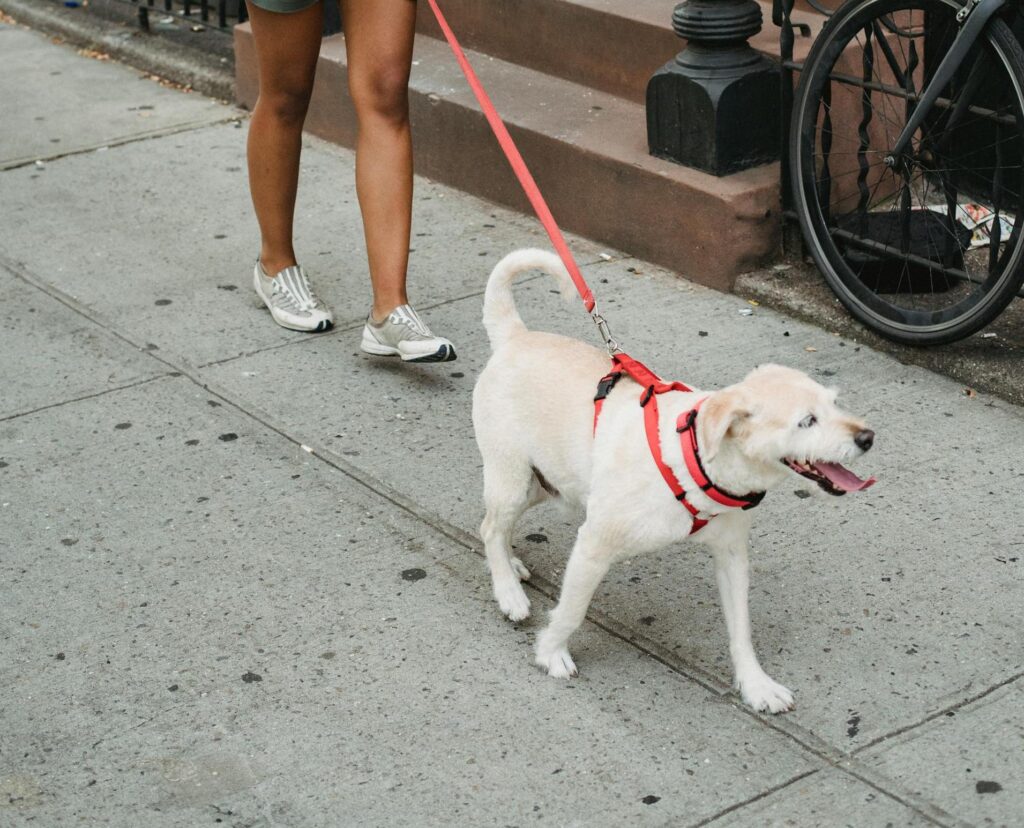
A walk during which the dog constantly pulls on the leash is not pleasant for any party involved. And if the dog is wearing a collar, it may even damage its windpipe.
But why does a dog pull during a walk?
There may be many reasons:
- The dog never learned how to walk on a loose leash – dogs are not born with this skill. If not trained properly, they may never acquire it.
- The walks are too short – if the owner goes out with the dog only to meet its physiological needs, the dog doesn’t have enough time to fulfil its other needs: exploration and communication with other dogs. It tries to gather as much smell from the surroundings as possible in the short time it has for a walk and therefore it pulls towards places that are interesting for him.
- The owner walks too fast – if the dog doesn’t have time to sniff as long as they like, they will run towards the next interesting object (bush, lamppost) to get there as soon as possible, to have enough time to sniff before the owner moves on.
- The leash is too short – the dog tries to reach the places and smells that are interesting to him. They are usually not near the owner.
- The dog is used to a retractable (flexi) leash – such a leash always exerts some pulling force and the dog needs to put some effort into walking in any direction away from the owner. The dog is used that something is pulling on it all the time and it’s not used to walk on a loose leash.
- The dog is afraid of something and wants to leave the situation as soon as possible.
To make a walk more enjoyable for everyone and reduce pulling on the leash:
- Take time – at least one walk per day should be for a dog – let them sniff as much as they want in one spot and let them walk where they want (as long as it is safe). Exploration and sniffing are one of the most important needs of a dog.
- Use a longer, non-retractable leash – if you are not walking between people or next to a road use a leash of at least 3 m, and whenever there is more space even 5m so that the dog can move more freely. Or let the dog off the leash if it’s safe.
- Teach the dog to walk on a loose leash – a bit of patience and communication with each other can go a long way. You can try the following method: if the dog pulls, stop or walk much slower. Make a sound to get his attention and if he stops and looks at you, go further. Sometimes calling the dog to you and/or changing direction can also be helpful. And reward the dog with a treat, voice or a pat (whatever works best for your dog) when the leash is loose. But don’t yank on the leash, that’s usually not helpful and can even cause injuries. Remember, the goal is not for the dog to walk all the time next to your legs.
- Figure out if your dog is afraid of something. If so, see if you can avoid difficult situations or help your dog overcome his fears (with a help of behavioural consultant).
If you would like more advice or help with training, get in touch with me.
Why does a dog pull on the leash during a walk?
